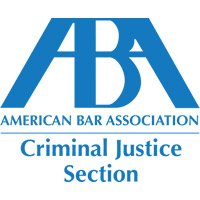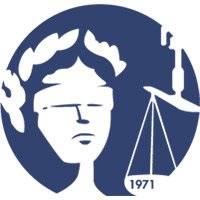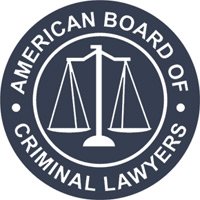IMPROPERLY CHARGED OFFENSES
Indictments may also be infirm because of the manner in which the offenses are charged. An indictment my not charge a defendant with the same offense in a multiple counts nor may one count of an indictment contain several different offenses. Each of these practices violate due process by increasing the chances that a person will be convicted based only on the manner the offenses are charged.
“MULTIPLICITOUS” INDICTMENT:
First, the situation where a single indictment charges the same offense in various counts of the indictment; such constitutes a “multiplicitous” indictment. Gerberding v. US, 471 F.2d 55, 58 (8th Cir. 1973). The vice inherent in a multiplicitous indictment (one offense charged in several counts of the same indictment) is that the defendant may be caused to suffer multiple sentences for the same offense, or the indictment may have the effect of suggesting to a jury that the defendant has committed several crimes rather than one. US v. Mamber, 127 F.Supp. 925, 927 (D.C. Mass. 1955); US v. Provizano, 50 F.R.D. 361 (D.C. Wis.1974). See US V.
Digeronomo, 598 F.2d 746 (2nd Cir. 1979) [reversible error for trial court not to instruct jury against convicting defendant of both Hobbs act violation and 18 U.S.C. §659 (interstate transportation) charged in same indictment].
But See: US v. Salas-Camacho, 859 F.2d 788 (9th Cir. 1987) [identical false statements made to two customs inspectors, with differing functions, are chargeable as separate violations of 18 U.S.C. §1001].
“DUPLICITOUS” INDICTMENT:
Second, where the same count of an indictment charges two or more separate offenses, such constitutes a “duplicitous” indictment. US v. Goodman, 285 F.2d 378, 379-380 (5th Cir. 1960), cert. denied, 366 US 930 (1961); Gerberding v. US, 471 F.2d 55, 59 (8th Cir. 1973). The vice inherent in “duplicitous” pleading is that there is no way to determine from the general verdict of “guilty”, upon which of the several offenses charged in the same count the defendant was convicted. This makes proper assessment of punishment difficult, deprives the defendant of his right under the Sixth Amendment and Rule 7(c), F.R.CR.P., to notice of the nature of the accusation against him in order to adequately prepare a defense, and exposes the defendant to the likelihood that the difficulty in determining the particular offense upon which he was convicted will subject the defendant to double jeopardy. US v. Leggett, 312 F.2d 566, 570 (4th Cir. 1962). Also where evidence at trial constitutes a constructive amendment of the indictment and not merely a variance in proof, same constitutes a violation of the Grand Jury Clause of the Fifth Amendment. US v. Zingaro, 858 F.2d 94 (2nd Cir. 1988); US v. Glenn, 828 F.2d 855 (1st Cir. 1987).
But See: US v. Zeidman, 540 F.2d 314 (7th Cir. 1976) [indictment not duplicitous where the two acts alleged in one count originate from one transaction];
US v. Outpost Development Co., 552 F2d 868 (1977) [allegations in a single count that a Defendant committed an offense by one or more specific means held proper];
US v. North, 708 F.Supp. 372 (D.D.C. 1988) [indictment not duplicitous when efforts to impede or obstruct separate congressional inquiries were closely related in time and involve somewhat separate questions].
Failure to raise claim that indictment is duplicitous prior to trial may constitute waiver.
US v. Elam, 678 F.2d 1234 (5th Cir. 1982).
REMEDY FOR “MULTIPLICITOUS” OR “DUPLICITOUS” PLEADING [ELECTION OF “OFFENSES” OR “COUNTS”]:
The Remedy available for “duplicitous” or “multiplicitous” pleading is to move to have the Government elect upon which charge they desire to proceed. In the case of a “duplicitous” indictment the Government should be required to elect that offense charged in the same count upon which it will rely and limit its proof to that offense. US v. Goodman, 285 F.2d 378, 380 (5th Cir. 1960), cert. denied, 376 US 919 (1961); Thomas v. US, 418 F.2d 567 (5th Cir. 1969). In the case of a “multiplicitous” indictment, the Government should be required to elect which of the counts upon which it wishes to proceed and to dismiss those counts not elected. US v. Universal C.I.V. Credit Company, 344 US 218, 225 (1952); US v. Greenberg, 344 US 218, 225 (S.D. N.Y. 1962); US v. Greenberg, 30 F.R.D. 164 (S.D.N.Y. 1962); Wright, Federal Practice & Procedure: Criminal, §145.
REMEDY FOR “MISJOINDER” OF OFFENSES [Rule 8a] [SEVERANCE FOR SEPARATE TRIAL]:
Where different offenses are improperly joined in separate counts of the same indictment in violation of Rule 8(a), F.R.CR.P., such constitutes a “misjoinder” of offenses, and a severance of the offenses for separate trial is the proper remedy. US v. Goodman, 285 F.2d 378 (5th Cir. 1960), cert. denied, 366 US 930 (1961); US v. Bally Mfg. Corp., 345 F. Supp 410 (E.D. La.
1972); Kleven v. US, 240 F.2d 270 (8th Cir. 1957). See also US v. Coleman, 497 F. Supp. 619 (N.D. Ill. 1980); US v. Bradford, 487 F. Supp 1093 (D.C. Conn. 1980). The trial court has no discretion to deny a severance of improperly joined offenses whether the defendant can show harm or not. Tillman v. US, 406 F.2d 930, 933, n. 5 (5th Cir. 1969); US v. Marrioneaux, 514 F.2d 1244, 1248 (5th Cir. 1973); US v. Pacente, 490 F.2d 661 (7th Cir. 1973), aff’d on rehearing, 503
F.2d 543 (7th Cir.), cert. denied, 419 US 1048 (1974).
REMEDY FROM “PREJUDICIAL” JOINDER [Rule 14] [SEVERANCE FOR SEPARATE TRIAL]:
Where the offenses set out in separate counts of the same indictment are properly joined, pursuant to Rule 8(a), F.R.CR.P., but the defendant can demonstrate “prejudice” from such joinder, the defendant is entitled to a severance and separate trial of said offenses under Rule 14, F.R.CR.P.: Cf. United States v. Burke, 789 F. Supp. 2d 395, 399 (E.D.N.Y. 2011) (finding severance appropriate despite proper joinder under Rule 8(a) where defendant was charged with two counts limited in their scope and time within an ongoing RICO conspiracy three decades in the making). Whenever offenses are joined for trial the potential for prejudice arises, King v. US, 355 F.2d 700, 703 (1st Cir. 1966), and the trial court should remain alert to this possibility. US v. Crawford, 581 F.2d 489 (5th Cir. 1978) (citing Shaffer v. US, 362 US 511 (1960)); US v. Clark, 480 F.2d 1249 (5th Cir.) cert. denied, 414 US 978 (1973). In determining whether a severance is warranted under Rule 14 the trial judge is entitled to consider the interests of the judicial economy as against the prejudice or harm caused the accused. US v. Forrest, 623 F.2d 1107, 1115 (5th Cir.), cert. denied, 449 US 924 (1980); US v. Benz, 740 F.2d 903 (11th Cir. 1984). However as set out above, the determination of “prejudice” is left to the sound “discretion” of the trial court, and appellate review is limited to abuse of that discretion. Opper v. US, 348 US 84 (1954); US v. Dryder, 423 F.2d 1175 (5th Cir.), cert. denied, 398 US 950 (1970); US v. Lewis,
787 F.2d 1315 (9th Cir. 1986).
“The decision to grant or deny a motion for severance under Rule 14 is committed to the broad discretion of the trial court. US v. Webster, 734 F.2d 1048, 1052 (5th Cir. 1984), petition for cert. filed. To demonstrate an abuse of discretion, the defendant bears a heavy burden of showing ‘specific and compelling’ prejudice, US
- Scott, 659 F.2d 585, 589 (5th Cir. 1981), cert. denied, 459 US
854, 103 S.Ct. 121, 74 L.Ed.2d 105 (1982), resulting in an ‘unfair
trial’, Webster, 734 F.2d at 1052.” US v. Chagra, 754 F.2d 1186
(5th Cir. 1985).
Courts have required a defendant appealing an adverse ruling on severance, after conviction, to demonstrate “compelling prejudice” such as the fact that a jury would be unable to collate and appraise the independent evidence against each defendant, US v. Benz, Supra, or “that the jury’s perception of the defendant will be so adversely affected by the evidence of the prior crimes is so strong as to create a presumption favoring severance”. US v. Lewis, 787 F.2d 1318, 1322 (9th Cir. 1986).











